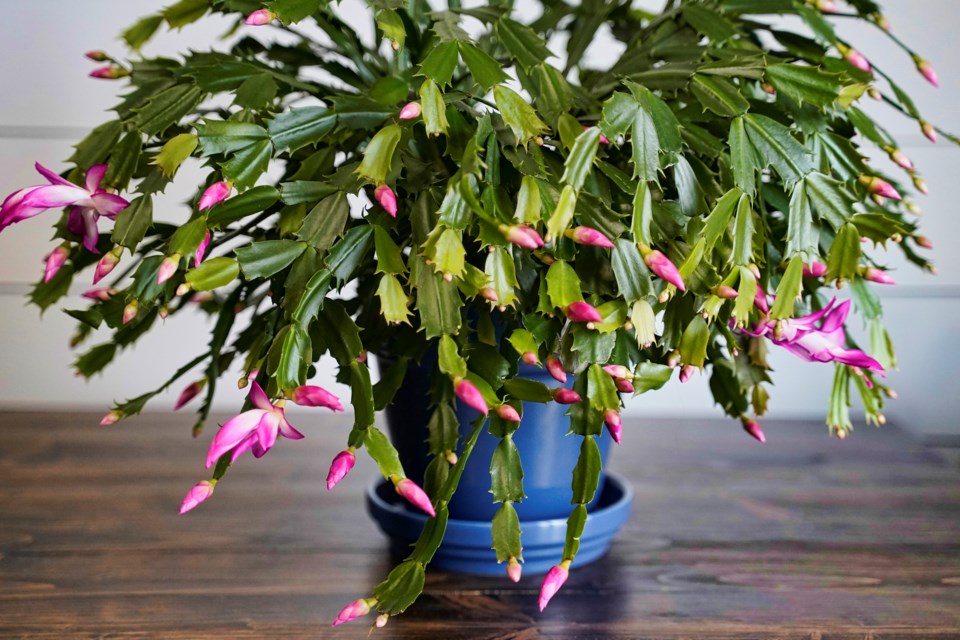This time of year the “Christmas” cactus is putting on an impressive display if it has been receiving the proper care. Or, you could be wondering why your friend’s Christmas cactus is blooming, but yours refuses to bloom. There are two main reasons for this discrepancy. There is more than one plant commonly known as the Christmas cactus, with different bloom times, and they both require the right conditions to put on their cheery winter display.
The older traditional Christmas cactus that your grandmother has passed on to family members is the species Schlumbergera bridgesii. This plant has segmented flattened leaves with rounded edges. Given the right conditions, it blooms around Christmas with tubular pink flowers. The white-flowered ones are less common.
The “Christmas” cactus in bloom now is Schlumbergia trunctata. This is the plant most commonly sold these days. It is also called the Thanksgiving cactus, because it blooms earlier, around the American Thanksgiving holiday. It is more popular because it has a wider selection of colours, from white to pink to red, and even purple, peach and orange. The flattened leaves are similar to S. bridgesii, except the edges have points instead of scallops. The flowers are also tubular, but not as pendulant.
Growth requirements for both are the same, but the Thanksgiving cactus is more forgiving if conditions aren’t exactly right. There is also an Easter cactus, or spring cactus, but it is rarely seen for sale, at least around here. Rhipsalidopsis gaertneri also has flat leaves with scalloped edges, and the star-shaped blooms come in many colours.
These cacti are not desert plants. These are forest cacti, from southeast coastal Brazil. They grow in shady, humid forests, on trees, in the decomposing leaves and mosses where branches meet. This is what determines their growing conditions. They need humidity, rich potting soil, cool conditions and daily periods of good light alternating with long periods of dark.
Water the plant regularly as soon as the surface of the soil is dry. It benefits from misting, especially in winter when indoor air is dry. Fertilize regularly in spring, summer and fall, and less often in winter. To encourage blooming provide eight to ten hours or bright light, in a south or west-facing window, and at least 14 hours of dark. Day temperatures can be as warm as 21C, but night temperatures should be between 17-19 degrees celsius. A spare bedroom which is kept cool and where lights are not turned on, with a sunny window, is ideal. Once flowering the plants can be brought into a warmer room to be appreciated.
There is nothing like a bright, flowering plant to lift our spirits in winter, especially a COVID-19 winter.




